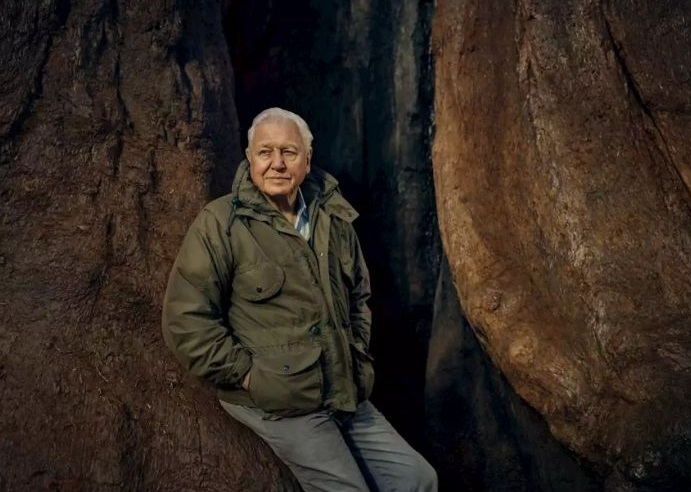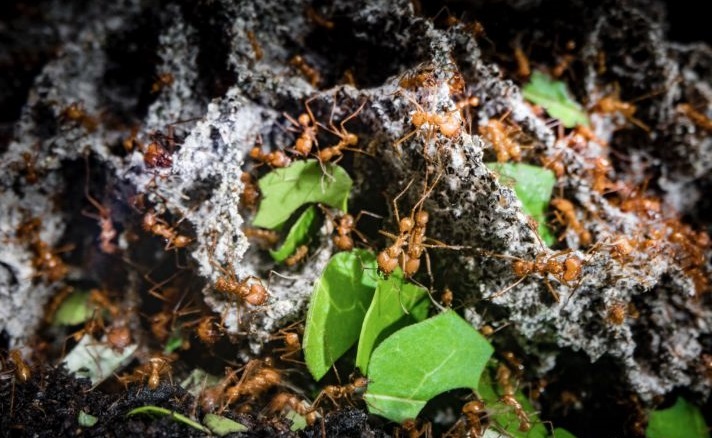Recently, station B launched a new documentary called “The Green Planet”. The production team is the Natural History Department of BBC Studios.
Naturally, BBC does not need to introduce too much. Because it has produced many well-known excellent documentaries, it has become the number one brand of nature documentaries.

The BBC label has also become a quality guarantee for nature documentaries.
The representative works of BBC nature documentaries such as “Planet Earth” and “The Blue Planet” are all important works destined to be famous in history.
In the words of netizens, BBC’s natural documentaries can only be watched on their knees.
“The Green Planet” is still the production team of “The Blue Planet” series. And the commentary of this documentary is still the well-known David Attenborough, known as the “Father of the World’s Nature Documentary”.
“Father of the World’s Nature Documentary” – David Attenborough.

On January 10th, BBC launched the first episode “Tropical Worlds”. There are three main points of interest in this episode, one is the survival wisdom of plants, the other is the gorgeous visual spectacle, and the third is the top production level.
Let’s talk bit by bit.
1, The survival wisdom of plants
Plants are an important part of the natural ecology, but humans know very little about plants, and they have always believed that plants are relatively static species that grow silently without minds.
But “The Green Planet” will definitely subvert your cognition, and you will realize that plants also have life and it is not an anthropomorphic metaphor.
You will be amazed at the survival wisdom of plants, and the scheming of surprising plants.
The instincts of natural creatures are actually two things – survival and reproduction. Faced with survival and reproduction, each plant has its own unique survival strategy.
Plants show their full potential on the land where they grow, compete for survival resources, expand reproduction methods, and launch fierce competition and even struggle.
As David Attenborough put it, it’s not just a rainforest, it’s also a battlefield.
For example, it is described in the documentary that in order to compete for sunlight with broad-leaved plants, a vine will use its slender tentacles to wrap and roll up the leaves of broad-leaved plants, so that more sunlight can shine on itself.
But the mantis oriole was one of the fastest growing plants, and a young Ochroma lagopus Swartz tree grew at the fastest rate while spreading its 40cm wide leaves.
It tucks the vines under it, absorbing the sunlight from the clearing.
Meanwhile, another vine, waving its barbed tentacles, wanted to snag the leaves of Ochroma lagopus Swartz, twisting it to death.
But Ochroma lagopus Swartz still has a hand, and its leaves are covered with a layer of silky downy, like a shield, which can not only defend against the barbs of the vine, but also injure the tentacles of the vine.
In the end, the vines swept down the tentacles all over the body, and quickly rushed to the sky to become the final winner, leaving only a group of defeated men to continue to fight under them.
The competition in the plant world is even more exciting than the human war, but “The Green Planet” shows more than just the struggle between plants and plants.

Many plants also need to compete with animals, and even the war between plants and fungi and animals is recorded in documentaries.
The Leafcutter Ant grows with the fungus in the ant colony, the Leafcutter Ant goes out to cut the leaves of Bixa orellana L to provide food for the fungus, and in return the fungus grows mushrooms for the Leafcutter Ant to feed.
However, Bixa orellana L will not sit still and let Leafcutter Ant slaughter.
Bixa orellana L. even used chemical means, using a long-range poisoning trick to make the leaves grow a toxin.
When Leafcutter Ant transports the leaves of Bixa orellana L back to the ant colony to be eaten by the fungus, the fungus is poisoned.
This was a long-range attack, Bixa orellana L kept his own leaves, and Leafcutter Ant chose other leaves to continue feeding the fungus.
But plants can sometimes be clever but be mistaken by cleverness. The documentary introduces a tree called Antiaris toxicaria Lesch.

It grows poisonous sap and seeds that prevent the seeds from being eaten by other animals.
But because birds eat poisonous seeds to defecate on trees, the toxins are introduced into tree roots from bird droppings and absorbed by trunks and leaves.
So Antiaris toxicaria Lesch was poisoned by his own poison.
In addition to the above, we can also see from documentaries that plants use animals for pollen transfer.
For example, Ochroma lagopus Swartz uses Potos flavus to disperse pollen, Corpse Flower uses Calliphoridae to disperse pollen, and so on.
“The Green Planet” shows us the intrigue and looting between plants in a subversive narrative way. It also shows us the mutual benefit, symbiosis and coexistence between plants and animals, or that sentence.
Every plant has its own unique survival wisdom, and every ecology has its own special operation mode.
This is the magic of nature and the charm of the documentary “The Green Planet”.
2,Gorgeous visual spectacle
The most intuitive feeling of watching “The Green Planet” is that it will give people a great visual shock, which is due to the beautiful presentation of the documentary in the visual spectacle.
This visual spectacle is reflected in two aspects, one is the beautiful static images, and the other is the dynamic beauty brought by time-lapse photography.


The BBC’s nature documentaries have always been known as the wallpaper material library, and this “The Green Planet” is of course no exception. It can almost be said to be closed-eye screenshots and frame-by-frame wallpapers.
We can travel through rain forests, oceans and deserts in “The Green Planet”, and we can also see beautiful plants that we can’t see on weekdays. Just find a few pictures to show you the beauty of plants.
Just frame-by-frame wallpapers can’t fully explain the visual enjoyment that “The Green Planet” brings to the audience, many dynamic pictures.
Even a transition shot is enough to make people stunned.
At the beginning of the documentary, there is a transition shot, which is a transition from a leaf to the earth. The texture of the leaf changes into mountains and rivers, and the leaf surface changes into forests and grasslands. With extremely stunning special effects and editing, it is completed once. Very stunning turnaround.

In addition, the microscopic perspective and time-lapse photography that can be seen everywhere in documentaries are even more pleasing to the eye.
We can see tree trunks that glow when digested by fungi, as well as glowing mushrooms rushing out of the tree trunks.
We can see the seeds of plants being sown from the sky like a fairy tale, and we can also see the whole process of the seeds germinating, entering the soil and growing.
We can see the dream scene of hundreds of millions of fungi spreading spores, we can see the Leafcutter Ant cutting leaves incisively and vividly, and we can see the magnificent blooming of Corpse Flower…
Before watching the BBC’s nature documentary, you should have the mentality of watching a visual feast, but trust me, “The Green Planet” can still give you more!
Or use the netizen’s bullet screen to summarize, you can always trust the photographer of the BBC documentary!
By the way, it must be reminded that watching “The Green Planet”, 4K+HDR+Dolby Atmos is the correct way to open it.
Top production level
The production team of “The Green Planet” is the world’s top documentary production team, and its production level is naturally the world’s top level, but I still want to mention the soundtrack of this documentary.
In the past, the soundtracks of nature documentaries were mostly peaceful and gentle, but “The Green Planet” was not like that.
Because the documentary tells the fierce struggle or mutually beneficial cooperation between plants and animals through small stories, the production team chose to use the soundtrack to explain the story in the way of film.
This is relatively rare in the field of documentaries. The soundtrack follows the story in the documentary, whether it is magnificent, tense and thrilling, playful and naughty, or lamented. The high level of the soundtrack and the wonderful adjustment of the atmosphere are all admirable.
Another thing that can demonstrate the level of production is the documentary photography equipment – Triangle Tree.
This is a time-lapse camera stabilizer that can change the shooting angle. The triangular tree is a camera equipment specially developed by a former American military engineer for the shooting of “The Green Planet”.
It can be combined with motion control technology to accurately and clearly show the complete behavioral trajectory of plants, showing the vitality and charm of plants.
These devices give us a unique perspective that we have never had before, and take us into a different world. It can be said that the development of shooting technology allows us to see a more beautiful world.

The purpose of “The Green Planet” is to lead the audience into the world of plants, so as to observe from the perspective of plants.
The survival wisdom of these plants shown in the documentary allows us to understand the operation logic of natural ecology in more detail, and also allows us to re-examine the power of plants and the power of nature.
At the same time, it also makes us sigh at the ingenious workmanship and exquisite design of nature, which can not help but be amazed.
At the end of the first episode, David Attenborough mentions the word green desert.
This is a word worthy of human thought. Green deserts are not deserts without plants, but forests with sparse species diversity.
Because of the invasion of human beings, there are fewer and fewer virgin jungles, many virgin jungles are cut by human roads and cultivated land, and the species in the virgin jungles are becoming less and less.
Therefore, from the perspective of the continuation of this natural treasure, human beings should pay attention to the protection of the virgin jungle and reduce industrial invasion and natural destruction.
Let nature return to nature, and also make our earth more colorful.


